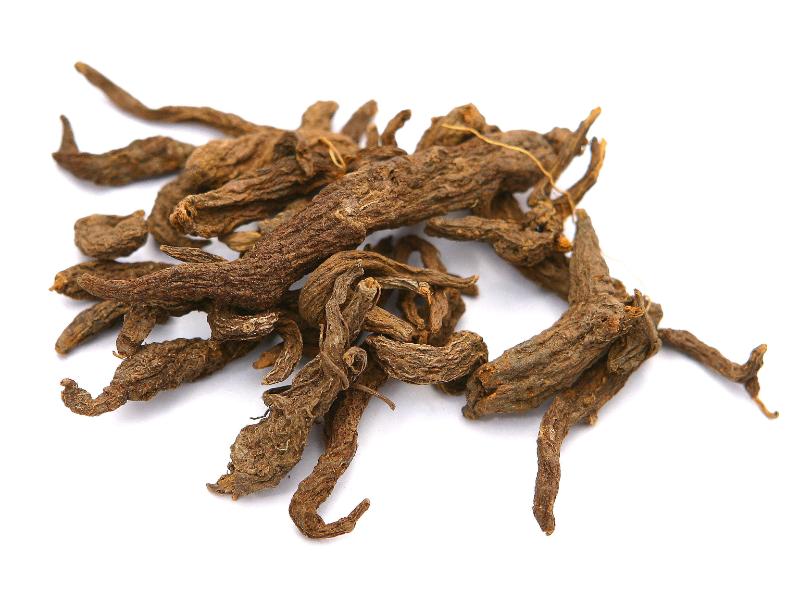Search in medicinals
Euphorbiae seu Knoxiae Radix
Euphorbia/knoxia [root]
大戟 〔大戟〕 dà jǐ

Alternate Chinese names: 下马仙 xià mǎ xiān
Kingdom: Plant
Origin in PRC Pharmacopoeia: Euphorbia pekinensis Rupr.; Knoxia valerianoides Thorel. et Pitard. (PRC Pharmacopoeia)
Origin in unofficial sources: Euphorbia pekinensis Rupr.; Knoxia valerianoides Thorel; Knoxia soongaricae Boiss
Use: Medicinal
Category: Draining-precipitation agents / Drastic water-expelling agents
Properties: Acrid, bitter; cold; toxic.
Channel entry: Lung, kidney, and large intestine channels.
Actions and indications:
- Drains water and expels rheum: Water swelling; drum distension; rheum collecting in the chest and rib-side.
- Disperses swelling and binds: Swollen welling-abscesses and
toxin sore s; scrofula and phlegm nodes.
Dosage and method: Oral: 1.5–3gr in decoctions, or 1gr per dose in pills and powders. It should be processed with vinegar when taken orally to reduce its toxicity, but the raw form is preferred for external application.
Warnings: Contraindicated in pregnancy and weak health. Dà jǐ is traditionally said to clash with gān cǎo (Glycyrrhizae Radix).
Product description: Euphorbia pekinensis (Peking euphorbia): This root is cylindrical or spindle-shaped, 15–20 cm long, tapering gradually from the large head. Its surface is grayish brown with longitudinal wrinkles and has side roots. It is hard and does not snap easily. Knoxia valerianoides (knoxia): This root is 3–7 cm long and 0.5–2 cm thick. It often bears a scar where the stem was removed. It is supple and usually slightly contorted, and at its lower end are 2–3 branch roots with numerous fine roots growing from them. The exterior surface has longitudinal wrinkles and is reddish brown, sometimes with a faint purple hue. This root is soft and supple. The decocting pieces are transverse or oblique slices about 1–3 mm thick.
Quality: Peking euphorbia should soft and tender in texture, while knoxia should be purplish red in color and firm in texture. Both should be free of fine roots.
Production area: Peking euphorbia (Euphorbia pekinensis): produced mainly in Jiāngsū, but also in Sìchuān, Guǎngdōng, Jiāngxī. Knoxia (Knoxia valerianoides): Guǎngdōng, Guǎngxī, Yúnnán, Guìzhōu.
Etymology: Dà jǐ 大戟, literally great halberd,
is said to be a metaphorical description of the extremely acrid and bitter flavor of this agent, which spears
the throat.